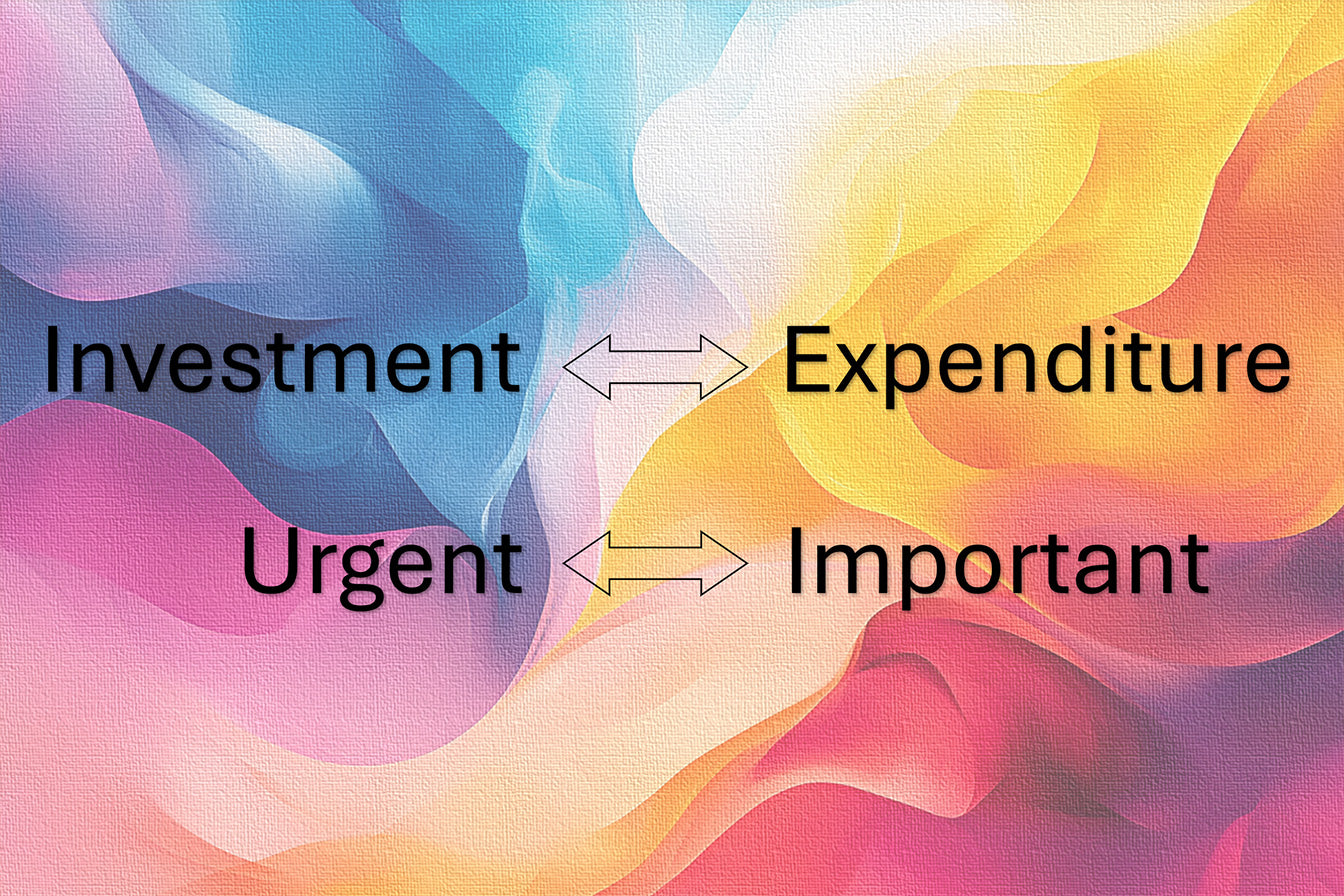We all tend to procrastinate when it comes to certain tasks. Procrastination is about leaving a task for a later time and instead focusing on something less important. Sometimes, you may not feel like doing something because you think it takes a long time to do it properly. You therefore put the task aside for a more suitable time later on. In chronic procrastination, that suitable time may never come!
As part of an effective time management system, you need to consider strategies in overcoming procrastination. To tackle this, you can apply tertiary prevention on procrastination. Using a variety of techniques to streamline your workflow and using carefully planned shortcuts can help you avoid behaviours that are known to add to the likelihood of procrastination. Here, you will learn about a number of strategies on task management and prioritisation.
Increase the Efficiency of Your Work
Calculate the following ratio:
Work Efficiency Ratio = (Real work done) / (Time spent in the office per week)
If you calculate the Work Efficiency Ratio, you may discover some interesting insights to how well you use your time. For example, you may discover that you only spent 18 hours on good solid work while you were in the office for 60 hours of clocked work during a week. This suggests that your Work Efficiency Ratio is 18/60 = 30%. This suggests a very inefficient work style.
What’s the point of spending so many hours at work when you get so little done? You should aim to increase this ratio, aiming for 100% efficiency. You can do this by forcing yourself to spend less time in the office and aiming to become more focused so you get real work done for every minute you spend at work.
Extract Next Action from Every Task
If you don’t know what you should do to move a task, you are more likely to procrastinate over it. Hence, for each task, you need to know the Next Action and focus on that instead.
For example, you may have the following task: “Write report”. You can easily procrastinate over this because you cannot just sit down and write a report. You need information, you need to research it, you may need to talk to people and you often need to plan before you can actually start writing something. As a result, you are likely to leave it and focus on other tasks simply because you haven’t decided how to start it.
For any given task, to avoid procrastination, the most important question to ask yourself is, “What is the Next Action to move this task forward?”
A few examples of Next Actions for “Writing report” are:
- Call Jose to get the latest status update on the project
- Research online to find books and references on topic X for the report
- Read previous papers and reports written on topic X to freshen upon this subject
Every active project must have at least one Next Action. Remember, a project is not necessarily a formal project at work. A project is anything that requires the completion of a series of tasks including examples such as fixing the garden shed, planning a wedding, finding a new job and so on.
Calculate the Cost of Your Time
Imagine you want to hire a consultant to do something for you. It can be an accountant, a lawyer, a marketing specialist or a technician. The first thing you probably ask them is how much they charge per hour. Irrespective of the quality of their work, credentials and reputations, you may still make a decision primarily based on a single value; their cost.
If someone is too expensive, it doesn’t matter how good they are, you may not employ them because they are too expensive for the type of task you have in mind for them. Equally well, if you already have an expensive member of staff, you will think carefully about the type of tasks delegated to them. Perhaps you will delegate the simpler tasks to a cheaper employee such as a receptionist.
Now, turn this around and apply it to yourself. What is the value of your time? If someone asks you how much you charge per hour for a task, what would you say? You have to take into account your overhead, your annual holidays, travelling for work and expenses until you come up with a value that suggests how much you are worth per hour.
Now apply this value to everything you do. Is it worth spending an hour searching for a cheaper product to save £30, or is it better to buy the more expensive item and instead spend that hour working on something more productive to get £50, £100 or even more. Remember, if you are in charge of managing your own time (which you should be), as an effective manager you need to know the one critical value; how much do you cost per hour. Decide on this and review it regularly to make sure your time management is current, up-to-date and effective.
If you know the monetary value of your time is, you are more likely to avoid procrastination because you know how valuable your time is. This is particularly effective for people who are self-employed, are contractors or run a company, because they can immediately turn an hour into something productive that generates cash and allows them to progress forward.
Use Contingency Wisely
When planning for a project or an extensive series of tasks, you need to consider a 10% contingency. Add 10% to the allocated time for “unforeseen” circumstances that can affect your workflow. Notice that contingency does not cover possible problems that you are already aware of. If you are aware of them you should already consider these problems in your plans. Contingency is only for events that are out of your control which are usually quite random and unpredictable.
Focus on One Task at a Time
When going through a task, pay your utmost attention to it. If you let yourself get distracted it will take longer to get the task done. You would rather spend two hours on a task and one hour doing something fun than to spend three hours doing the same task. Procrastinators are particularly susceptible to losing their attention. Staying focused is a skill and it can be learned until it becomes a habit.
Follow the above five simple but powerful time management guidelines and you are guaranteed to feel more productive immediately. Continue with these guidelines by monitoring yourself for 20 days to make sure you follow them. After 20 days, they become a habit and you no longer need to consciously force yourself to follow them; a new productive YOU will be born.
Comments
By John @ Thursday, September 27, 2012 6:57 AM
Awesome article.
I think you can’t be productive if you do multi-tasking. Although, there’s a point that we can hit our goal when we take 2 things at a time, but that doesn’t mean every time. So if you like to do this I suggest you should create a to-do list or use a project management software that can track your time and send email reports on how productive you have been for the whole day.
Soft Skills Training Materials
Get downloadable training materials
Online Train the Trainer Course:
Core Skills
Learn How to Become the Best Trainer in Your Field
All Tags
Training Resources for You

Course Design Strategy
Available as paperback and ebook

Free Training Resources
Download a free comprehensive training package including training guidelines, soft skills training activities, assessment forms and useful training resources that you can use to enhance your courses.

Our Comprehensive Guide to Body Language

Train the Trainer Resources
Get Insights - Read Guides and Books - Attend Courses
Training Materials
Get downloadable training materials on: Management Training, Personal Development, Interpersonal Development, Human Resources, and Sales & Marketing














Leave a comment
All comments are moderated before being published.
This site is protected by hCaptcha and the hCaptcha Privacy Policy and Terms of Service apply.